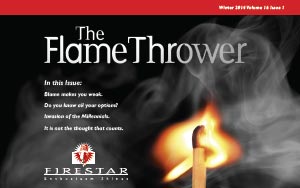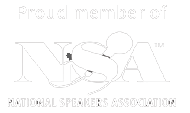
A More Diverse Diversity
Diversity is an important issue with many organizations trying to recruit, retain and grow employees with different ethnicities, ages, and genders. We work hard not to discriminate against people who look different than we do. But there’s another way we are diverse that has nothing to do with exterior appearances. We are diverse in our behavioral patterns.
I’m thinking of DiSC styles, but any scientifically valid assessment could serve as an example. A team that looks quite different – a mix of genders, ages, etc. might meet your current definition of diversity. But if they all have the same behavioral pattern, the group isn’t as diverse as you think.
Let’s say they all are the D style – a behavioral style that tends to push for results. Their lack of diversity might mean they neglect details or overlook the needs of employees. They will have blind spots a more behaviorally diverse team might not.
These blind spots can cause us to hire people that are the same style as we are (they have the same preferences as we do – yay!) and to manage people as if they were us. I have a friend who is a C style (he’s a deep thinker, an analyzer of details). His immediate supervisor is an I style (very enthusiastic, enjoys people and gatherings). She came to him one day and said “Hey, it’s time for the holiday luncheon; let’s go!” He responded, “Can I just stay here and work?” She later wrote him up for not being a team player. She viewed the luncheon as a reward and a team building activity. My friend viewed it as a punishment and a waste of time. He wanted to stay and work – perhaps helping the team more in the long run. But the I style felt being together as a group was more important.
I have heard dozens of examples of people feeling left out, frustrated, or misunderstood because of these behavioral patterns. The direct communicators think if people have a question or concern, they will state it. The indirect communicators often feel unheard or steamrolled. What are leaders to do?
Consider how your organization defines diversity and be aware of other ways a lack of it might negatively impact your mission. For example, if you are a group that needs cooperation from members of all political parties, but all your employees are members of the same party, would this negatively impact you? A Chamber of Commerce that has only large corporations represented on the board but serves thousands of small businesses might not be as strategically diverse as it should be.
Be open to the use of DiSC (or another assessment) to examine a different aspect of diversity. DiSC scores don’t correlate to gender or race – the results are gender and color-blind.
Be careful of diversity for diversity’s sake. Let’s say the Chamber in the above example puts a small businessperson on its board. If they haven’t told this person they are expected to represent the voice of small business, they may just feel intimated by all the big companies and not participate. Or they may just represent their own views. Or the others may not understand why they are even at the table. You can’t just dump someone different in a homogeneous group and “voila!” have peace, love and diversity.
Too much diversity will drive you insane. In my Chamber example, we might add a small business, then decide that restaurants need to be represented. Then ice cream shops, then food trucks…you see where I’m going. Have a method behind your diversity. Maybe you want to mirror the population. Maybe you want to represent your customers. Maybe you realize you have way too many I-styles, and someone needs to balance the books! Diversity merits strategic and expanded thinking. It shouldn’t just be a tally of external characteristics. We all deserve better than that.







